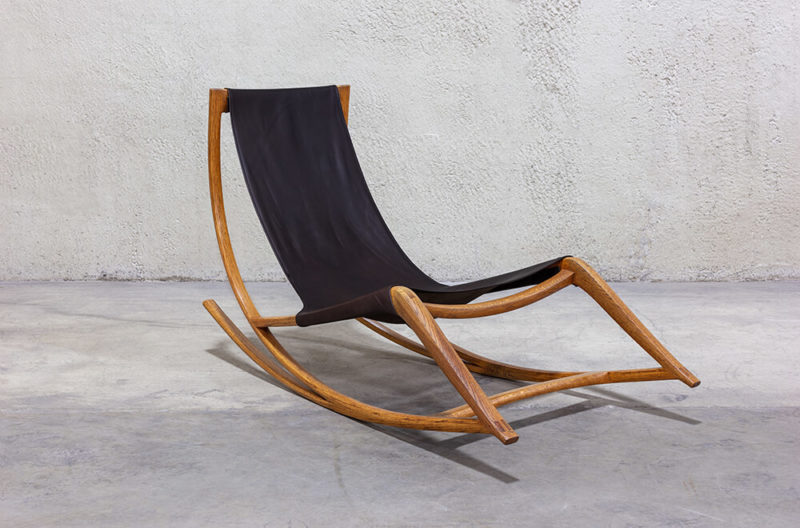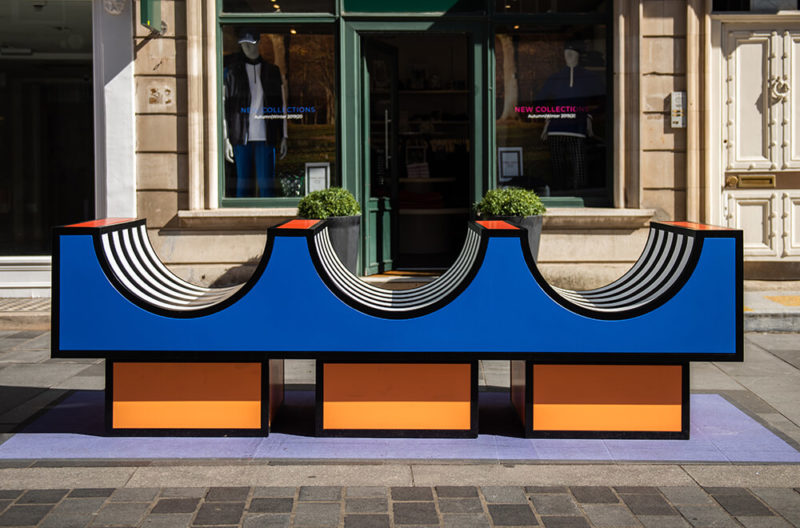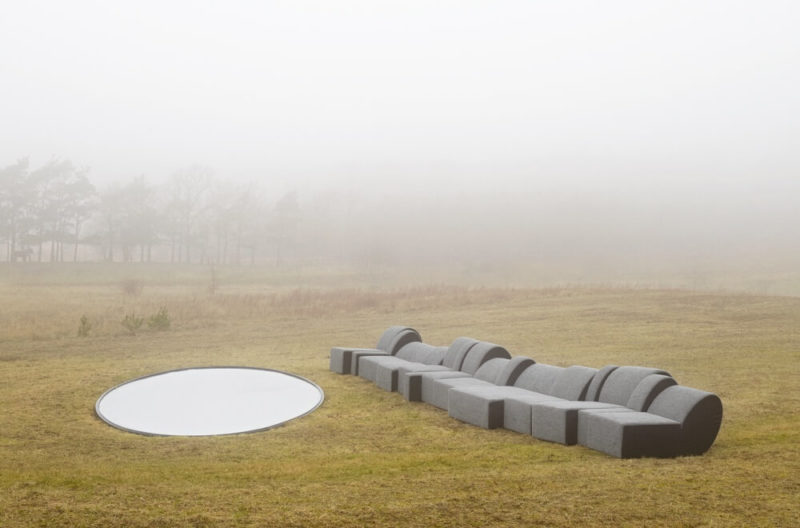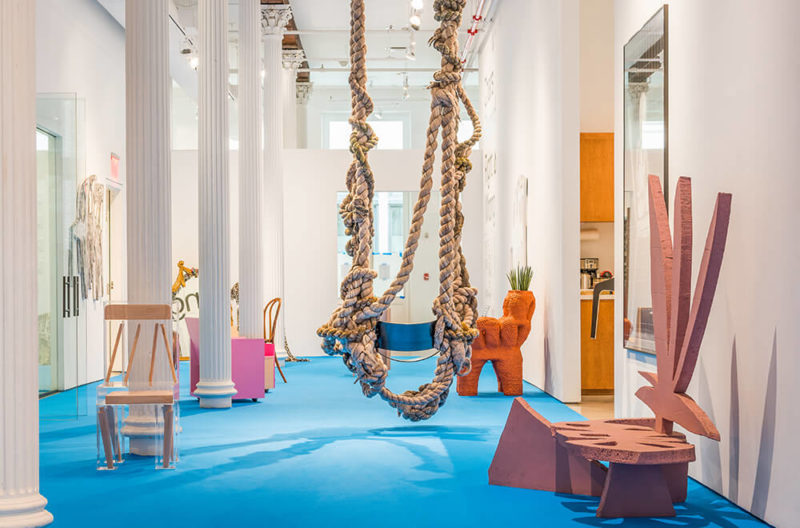Please Sit
A room of their own: six designers produce an eclectic mix of chairs for the rooms of 17th century Fenton House.
Fenton House and Garden, London
12th September 2019 – 4th May 2020
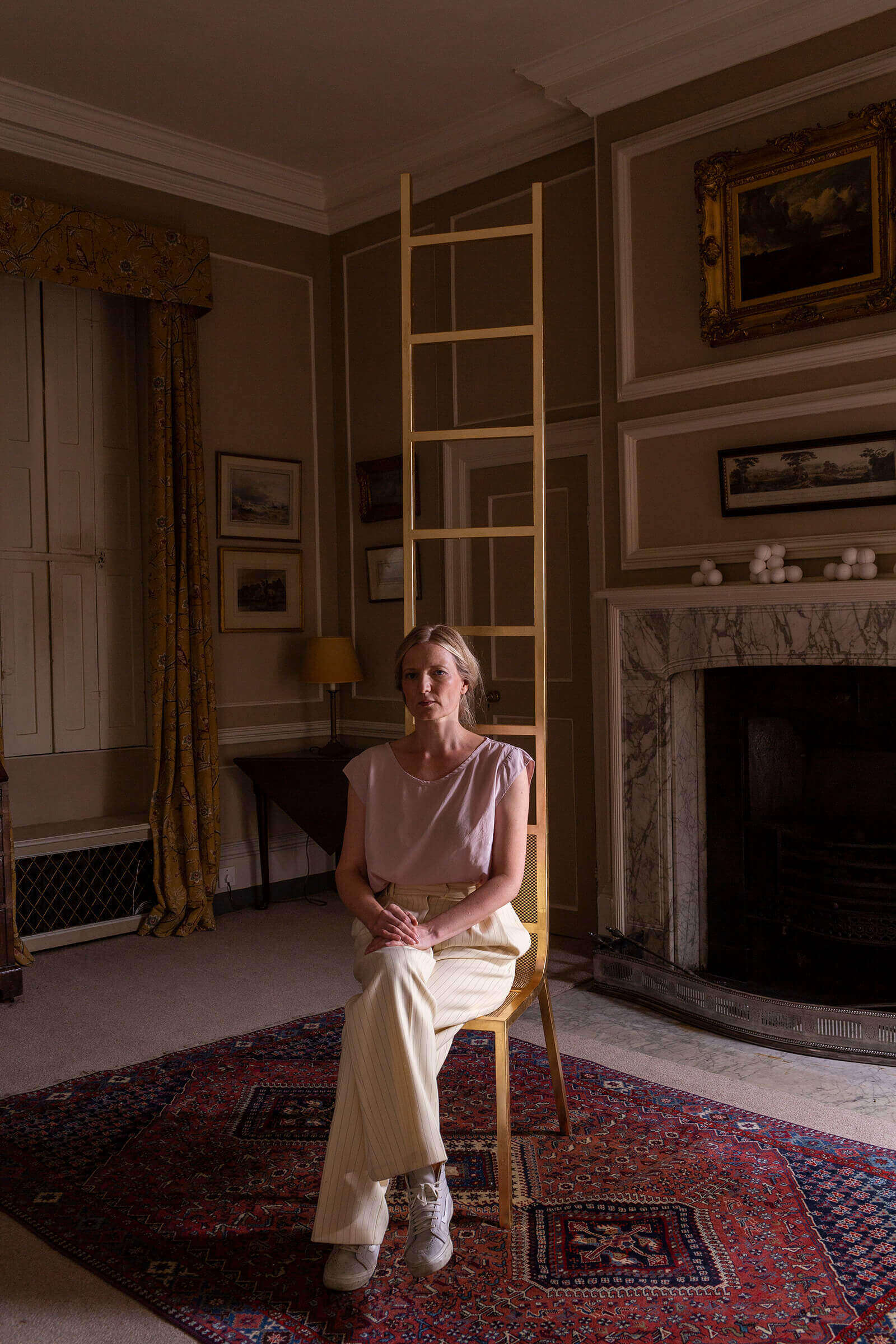
Curator Gitta Gschwendtner, ‘Jacob’s Chair’, 2019
COURTESY: Please Sit / PHOTOGRAPH: Oskar Proctor
THERE IS SOMETHING Brigadoon-like about the London Design Festival. Installations, exhibitions, talks, programmes and trade shows pop-up across the capital for its nine-day span, accompanied by much PR noise and marketing hoopla – before promptly disappearing again. However, a handful of events linger on a little longer and, as a result, leave a deeper impression. To these eyes the two highlights of the industry’s annual knees-up were ‘Designing in Turbulent Times’ at the Lethaby Gallery in King’s Cross, and ‘Please Sit’ at Fenton House (a National Trust property in Hampstead). And, happily, both have a lifespan that outlasts the festival itself.

Fenton House and garden
COURTESY: National Trust / PHOTOGRAPHY: Arnhel De Serra
Intriguingly the two shows feature work from designers of different generations. The former contains projects and ideas from recent Central Saint Martins graduates, who are leaving higher education – no doubt riddled with debt, as well as in the middle of a political and ecological crisis. The majority of participants in ‘Please Sit’ emerged in the ’90s when the world looked rather different, and it seemed for a brief moment that the world’s problems could be solved by Tony Blair’s triangulation of traditional British politics, working cheek-by-jowl with the guitar-based stomp of Oasis-driven BritPop. These were headily optimistic times, when things were going to get better. As Britain made its lurch to lifestyle, contemporary design made a transition from minority interest into the media mainstream, with the help of Wallpaper* magazine and the TV show Changing Rooms. This was a time when the vast majority of design graduates dreamt of working with the large Italian manufacturers, such as Cappellini or Magis, in roto moulded plastic.
Interestingly though a cluster of the characters at the heart of this show – Michael Marriott, Carl Clerkin and curator Gitta Gschwendtner – always seemed to think a little differently, almost in anticipation of the climate crisis, hollowed out high streets and over-production with which 21st century Western democracies are now coming to terms. While near contemporaries opened sizeable practices and worked with global brands, they always felt more ‘local’, staying rooted in process and a sense of craft. To this day their work regularly contains more than a hint of humour.
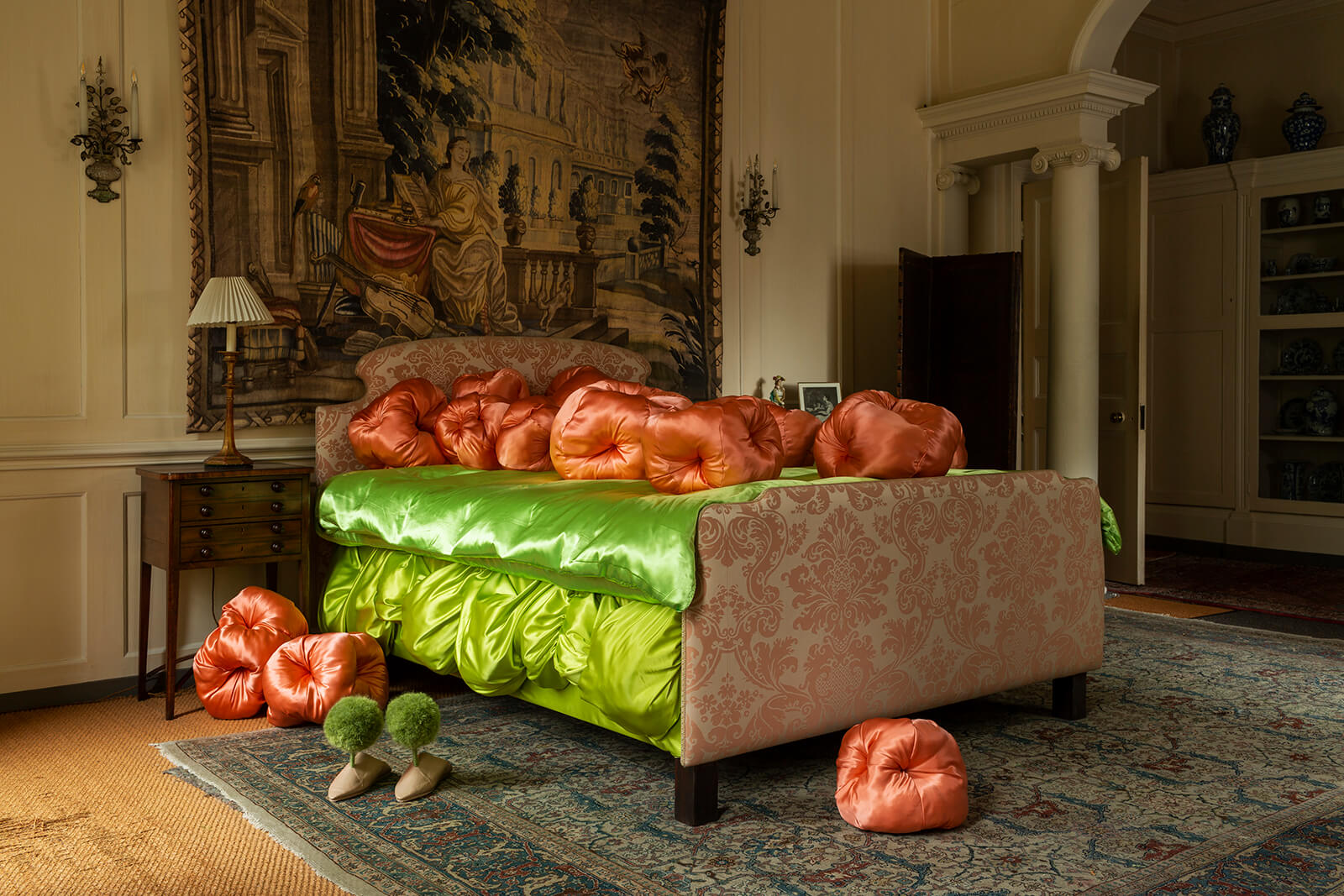
Frith Kerr, ‘Good Taste is a Waste Chair’, 2019
COURTESY: Please Sit / PHOTOGRAPH: Oskar Proctor
For ‘Please Sit’ the trio is joined by product designer Nina Tolstrup, who made her name by turning old pallets into desirable pieces of furniture, Maisie Broadhead, a fine artist whose work is more usually based around carefully choreographed photography, and the graphic designer Frith Kerr. Each is given a room to play with in the 17th century house, which contains a treasure trove of paintings, ceramics, needlework and (perhaps a little unexpectedly for first-time visitors) a huge variety of harpsichords.
The results are eclectic and often fascinating. In the Dining Room, for example, Tolstrup has created ‘Harp-sit-chord’ – a long, bench-like seat that takes its inspiration from the nearby (and rather magnificent) Shudi Broadwood harpsichord. “I imagined the eight-year-old Mozart playing the harpsichord in a light blue frock over a waistcoat and collared white shirt during his stay in London in 1764,” she explains.
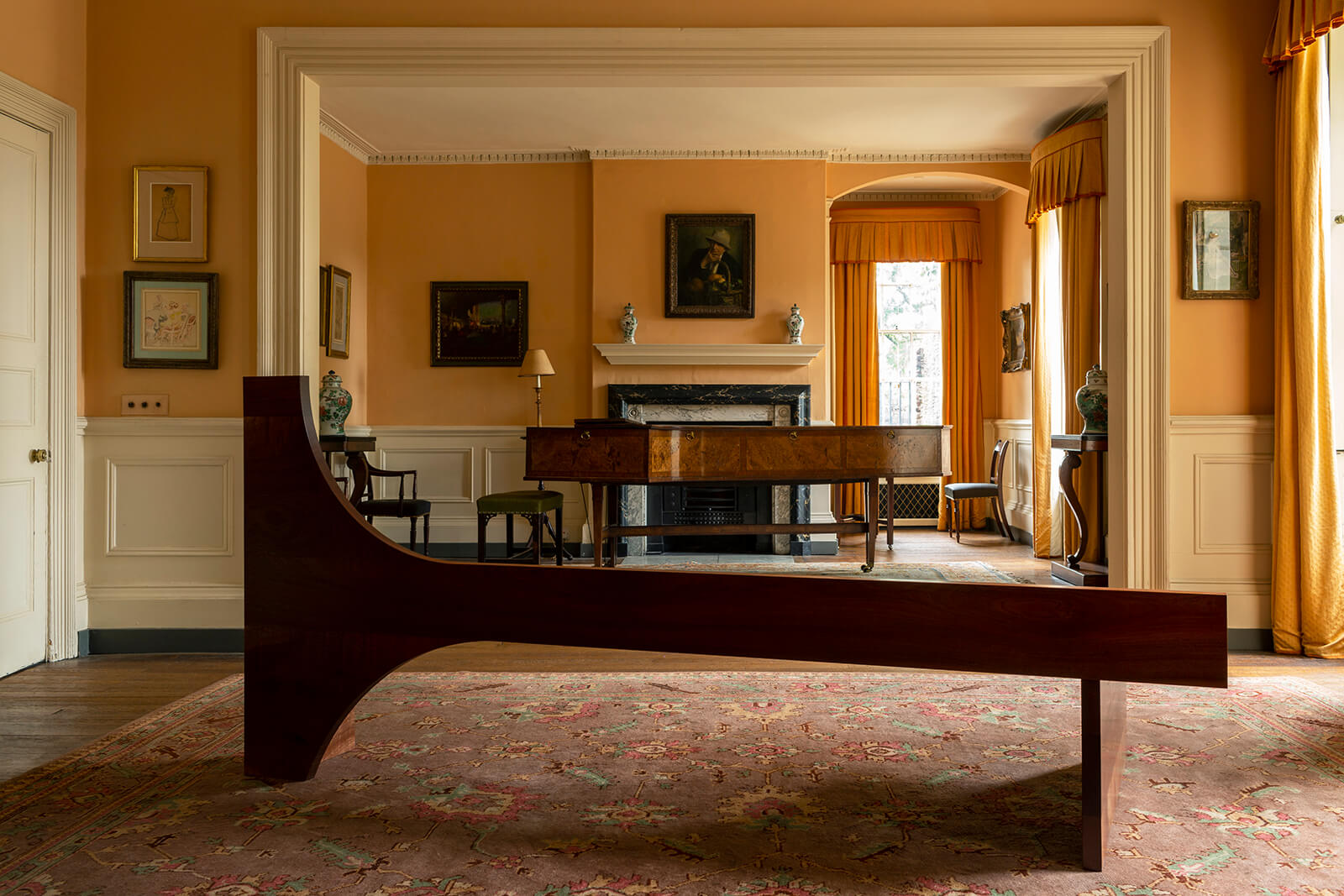
Nina Tolstrup, ‘Harp-sit-chord’, 2019
COURTESY: Please Sit / PHOTOGRAPH: Oskar Proctor
Elsewhere Marriott has built the snug ‘Chinese Chair’ in the Oriental Room, which butts fluorescent yellow plywood up against a woven oriental wool carpet and allows visitors to survey an adjacent cabinet of tiny Chinese snuff bottles in seclusion; Frith Kerr examines perceptions of taste on an old John Lewis bed in the Blue Porcelain Room; and Gitta Gschwendtner’s surreally long ladder-backed chair responds to the silk embroidery of Jacob’s Dream in the Rockingham Room (visitors can also see other grey powder-coated versions of the chair in the house’s quite magnificent garden).
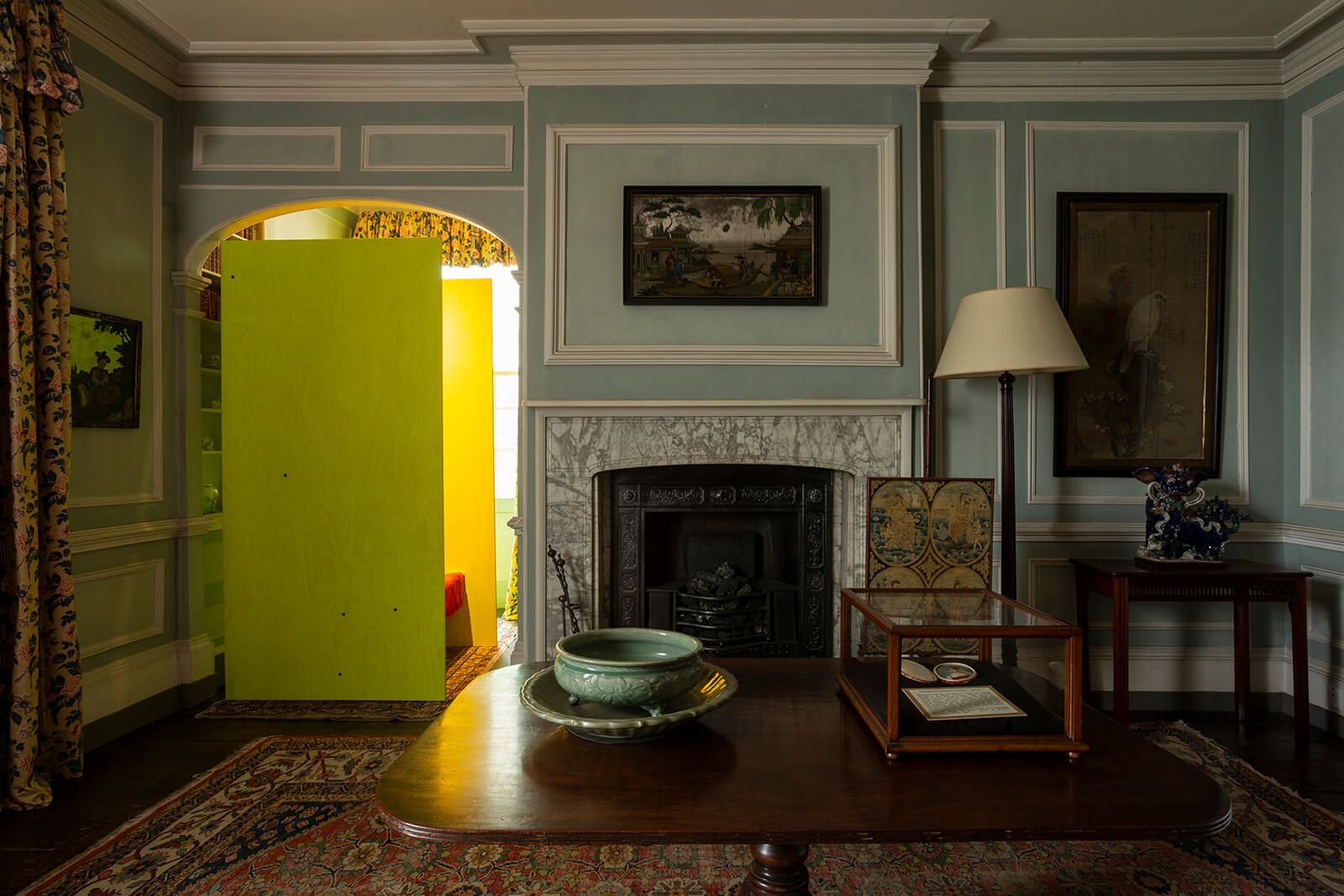
Michael Marriott, ‘Chinese Chair’, 2019
COURTESY: Please Sit / PHOTOGRAPH: Oskar Proctor
Arguably though the two highlights come from Maisie Broadhead and Carl Clerkin. Broadhead has produced a chair which merges seamlessly with the Drawing Room’s carpet, reflecting the life of the house’s final occupant Lady Binning. Widowed young, she allegedly became a recluse, wearing mourning clothes long after the death of her husband. In the artist’s hands the chair becomes a lonely symbol of captivity, where, as she explains, the owner has literally become ‘part of the furniture’.
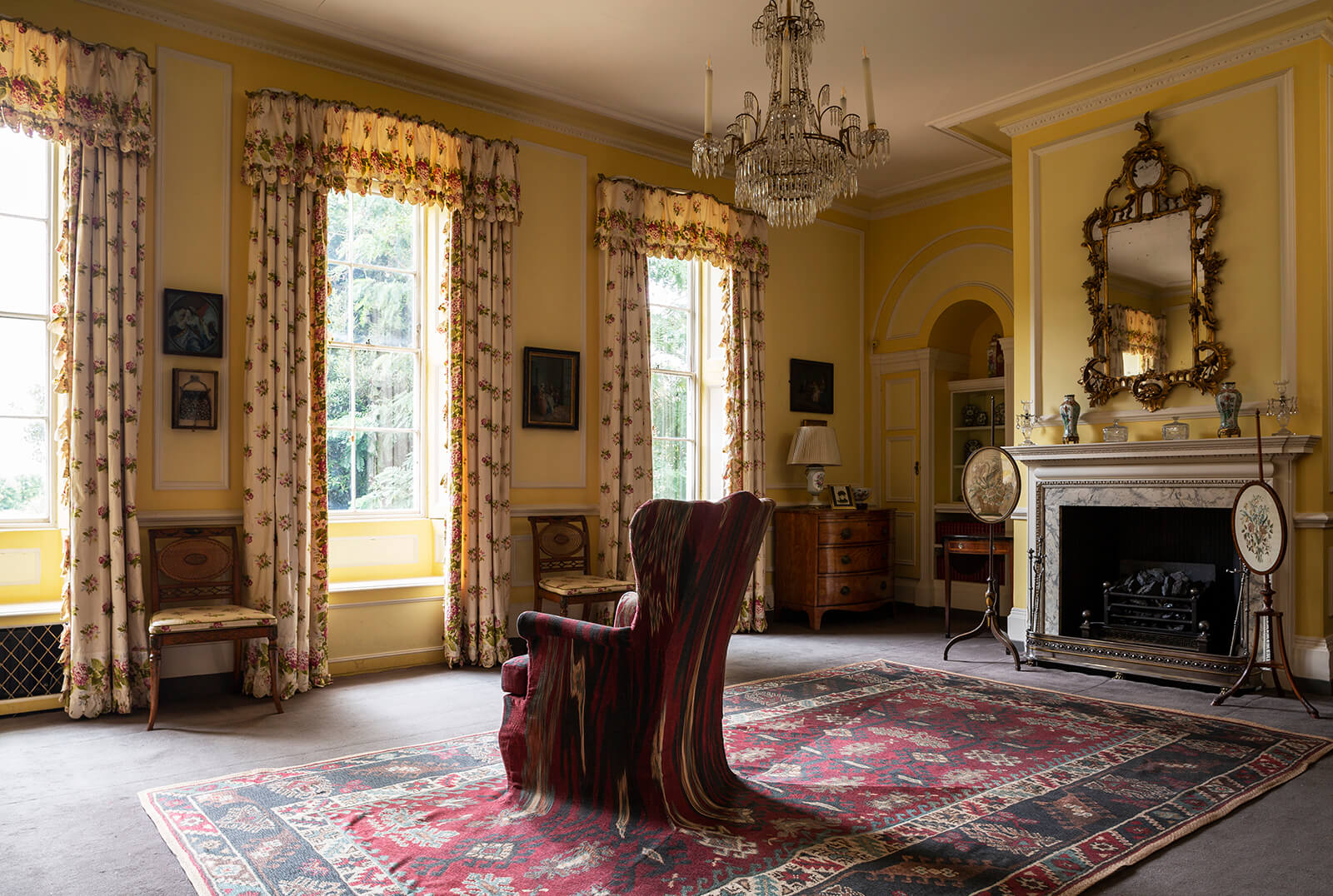
Maisie Broadhead, ‘Part of the Furniture Chair’, 2019
COURTESY: Please Sit / PHOTOGRAPH: Oskar Proctor
While her take on the setting is poetic and not a little poignant, Clerkin’s is more obviously vaudeville. The wingback ‘Speaker Chair’ is situated in the Green Room and has been designed specifically to let the sitter hear a radio soap opera written about Fenton House (which appears to take its cues from a combination of Downton Abbey and the French polishing Yellow Pages TV ad that gleaned a cult following in the ’90s).

Carl Clerkin, ‘The Speaker Chair’, 2019
COURTESY: Please Sit / PHOTOGRAPH: Oskar Proctor
Ultimately the joy of ‘Please Sit’ is that although each designer has taken a different approach, each has responded to the house and its contents with a sense of wonder that it’s almost impossible not to be charmed by.
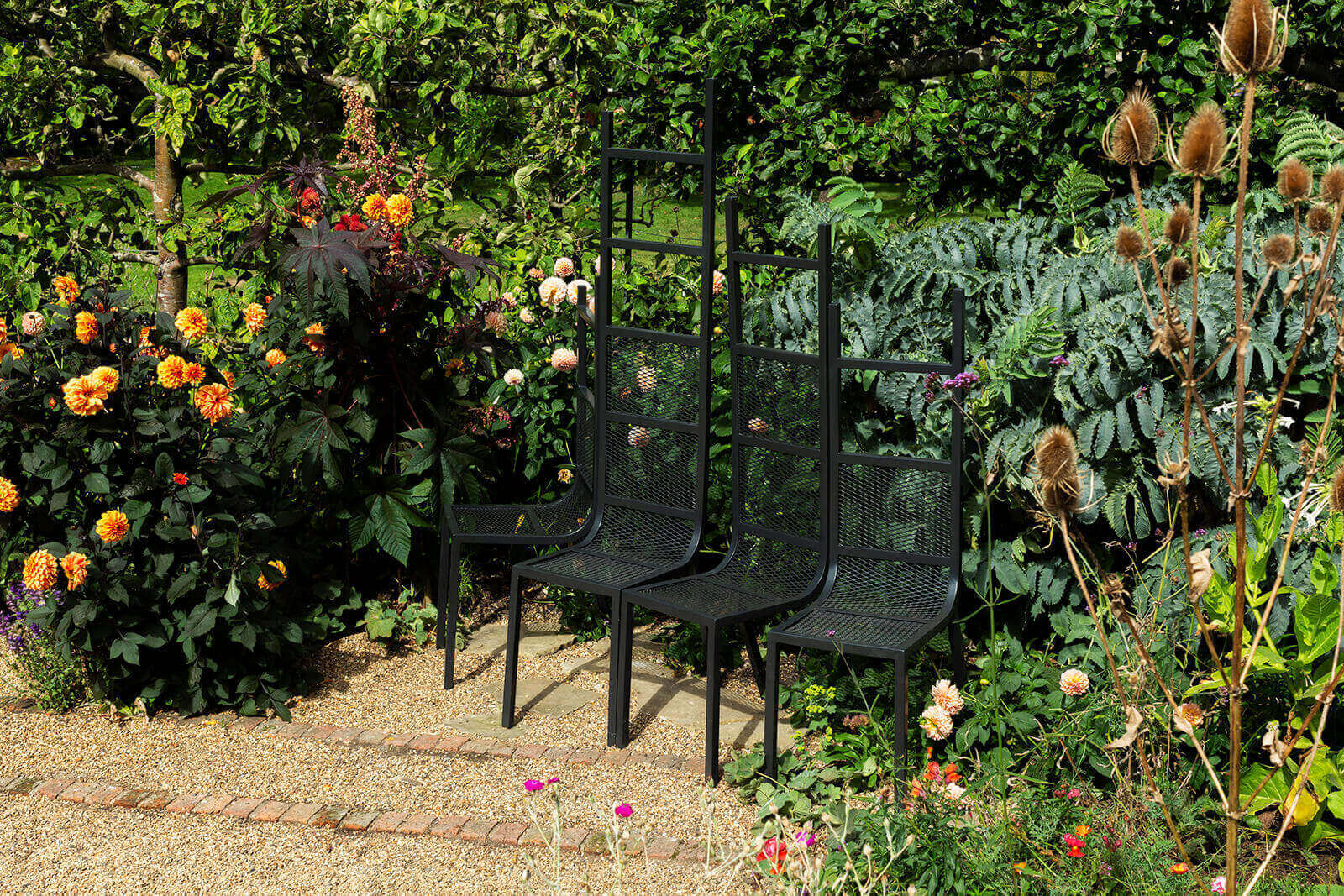
Gitta Gschwendtner, ‘Jacob’s Bench’, 2019
COURTESY: Please Sit / PHOTOGRAPH: Oskar Proctor
Fenton House and Garden – a 17th-century merchant’s house with walled garden in Hampstead, London.




